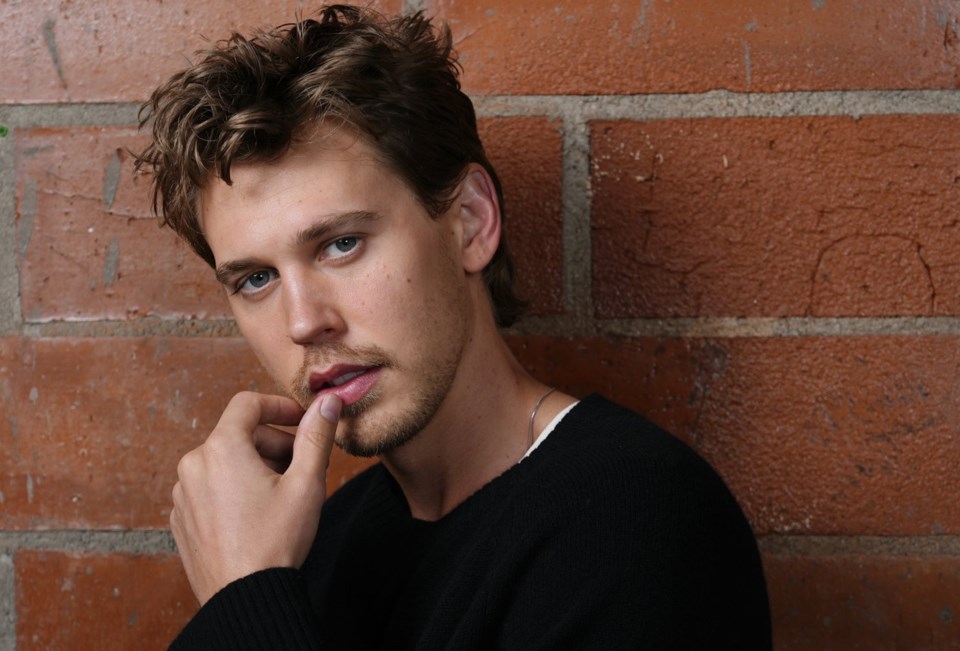Jeff Nichols had dreamt of making a film about a 1960s motorcycle club for over 20 years.
The obsession started when he first cracked open Danny LyonтАЩs book тАЬThe Bikeriders,тАЭ a New Journalism-style account of the Chicago Outlaws Motorcycle Club in the mid-1960s. He saw it as a story about rebels, romantics, frauds and the end of an era.
But he didnтАЩt quite realize just how terrifying it would be to film the motorcycles in motion.
The bikes were vintage. The actors, including and Tom Hardy, would be riding at high speeds. And there would be no helmets. At some point, one of his stunt coordinators just came out with it: тАЬThere is no way to make this 100% safe.тАЭ
They went for it. The danger was kind of the point. And everyone made it out unscathed.
тАЬThe BikeridersтАЭ ( ) is a rare summer gem: An original film with stars (including Jodie Comer, Michael Shannon, and Mike Faist), cool cred, pathos and a clear-eyed wistfulness for a brief moment and a type of guy.
тАЬThis is a film thatтАЩs really about nostalgia,тАЭ Nichols said. There is a sadness that comes with that. But thereтАЩs also a joy in remembering it.тАЭ
Catching a star on the rise
Nichols has always had luck with casting, getting movie stars in his films right as theyтАЩre about to break big (like Jessica Chastain in тАЬTake ShelterтАЭ).
For тАЬThe Bikeriders,тАЭ it was Butler. тАЬ тАЭ had yet to come out, but when he met him, he was certain: This is a movie star.
тАЬI read a lot of scripts and this one just felt different,тАЭ Butler said. тАЬIt felt full of humanity and these cinematic momentsтАжI felt like I was being invited into this other world. And he was one of the coolest characters IтАЩve ever read.тАЭ
Butler's Benny is also the most enigmatic of the bunch: A guy whose face is never shown in LyonтАЩs book and who is never interviewed тАУ just talked about.
тАЬI love how Jeff talks about him as being this empty cup that everybody wants to fill with their own expectations and their own responsibilities. He doesnтАЩt want any of that,тАЭ Butler said. тАЬThatтАЩs when he wants to cut loose and be free.тАЭ
Nichols wanted Benny to be bottled up until the end and remembered telling his star to тАЬpull it backтАЭ a few times.
тАЬLike, stop smiling,тАЭ Nichols laughed. тАЬWhen that kid smiles the whole world smiles.тАЭ
But he soon realized that was missing the point of casting someone like Butler тАФ an emotive actor with a big heart.
тАЬThat character got better because of him,тАЭ Nichols said.
A different point of view
One of NicholsтАЩ biggest breakthroughs was when he realized the narrator should be Kathy, who falls for Benny at first sight and gets wrapped up in the club.
тАЬShe just pops off the page,тАЭ Nichols said. тАЬSheтАЩs witty, sheтАЩs introspective, sheтАЩs self-deprecating, sheтАЩs infuriating at times. She is a real person.тАЭ
Comer saw in her a fascinating character, an тАЬordinaryтАЭ but still extraordinary person that reminded her of women she knew growing up in Liverpool. She worked tirelessly to nail KathyтАЩs very specific working-class Chicago accent.
But on another level, she was just a better voice for what he wanted to say.
тАЬThe ultimate truth, and a subtext of the film, is that men are really bad at sharing their emotions,тАЭ he said. тАЬObserving this group in the hands of a male narrator I think would be really boring.тАЭ
Fact, fiction and telling a good story
тАЬThe BikeridersтАЭ is a work of fiction. Nichols didnтАЩt want to be the historian of the Outlaws, a group which still exists. He mostly wanted to capture this time and culture and evoke the feeling he got when he opened that book so many years ago.
But he also draws heavily on LyonтАЩs images, some of which are recreated, and reporting. Much of KathyтАЩs dialogue are things the real Kathy, who was married to Benny, said. HardyтАЩs character Johnny was also apparently inspired by the Marlon Brando film тАЬThe Wild OneтАЭ to start the club. He was the leader and also a bit of a fraud тАФ a suburban dad with a real job on the side.
Nichols chose to make the film in color, instead of mimicking LyonтАЩs famous use of black-and-white photography.
тАЬTheyтАЩre beautiful, but they are romanticized,тАЭ Nichols said. тАЬI think when you put them in color, they become less affected. They become more realistic.тАЭ
The joys and pains of riding those bikes
Like Butler, Hardy came into the film with some motorcycle know-how. But neither would describe it as a leg up тАФ antique bikes are a different beast.
тАЬIt just happens to be a convenience because I can ride as opposed to lying about skiing,тАЭ Hardy said.
Still, once they got it down it could be rather exciting.
тАЬIt was exhilarating riding in a giant group,тАЭ Butler said. тАЬYou feel the energy of every motorcycle coming together.тАЭ
Comer said riding on the back of BennyтАЩs bike, in the Cincinnati night with engines roaring and street lights twinkling, was тАЬa really magical kind of movie moment.тАЭ
And the danger was ever-present. But it also resulted in some real movie magic, like the near-impossible recreation of one of LyonтАЩs most famous photographs with a single rider speeding across the Ohio Bridge.
In the film, Butler is the rider. They had shut down a bridge. They couldnтАЩt do it more than twice (both logistically and because they couldnтАЩt risk anything with their star). They had a 35mm film camera mounted on a car with a moving crane, attempting to speed alongside Butler.
тАЬAll of a sudden we lock in the cameras in the right spot, the bridge is in the right spot, Austin looks back, then he drives off,тАЭ Nichols said. тАЬAnd youтАЩre like holy (expletive): тАШWe got it.тАЩтАЭ
Lindsey Bahr, The Associated Press



